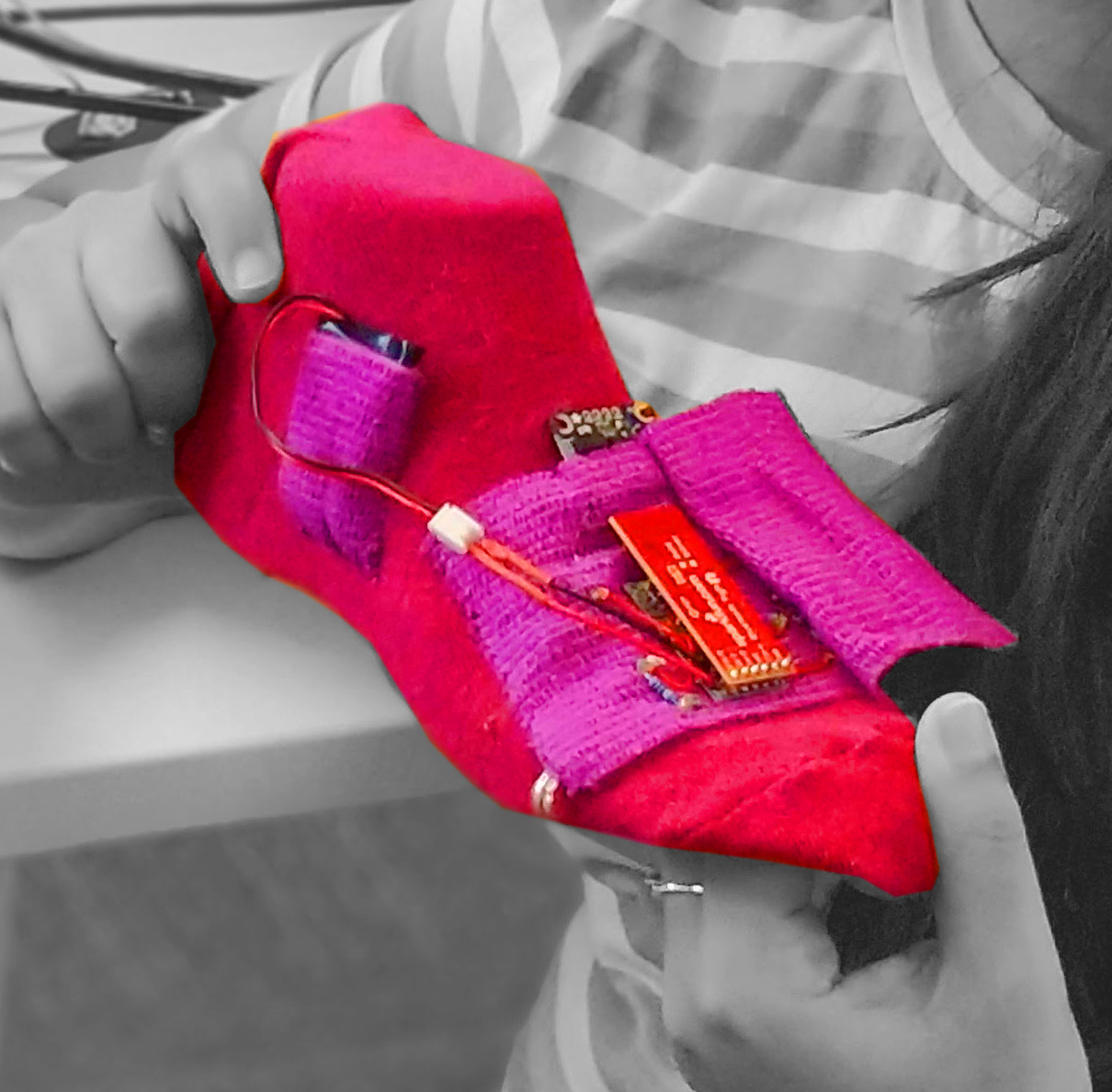Smart socks for remote reviews

Wearable ‘smart socks’ are allowing physiotherapists to conduct detailed consultations over the internet.
The high-tech socks allow therapists to assess and treat patients in video consultations by providing information on weight distribution and range of movement during exercises like steps, squats or jumps.
The wearable technology, developed by PhD candidate Deepti Aggarwal at The University of Melbourne, was trialled with three patients and a physiotherapist at the Royal Children’s Hospital, from February to June 2017.
“Australian physiotherapists are increasingly reliant on video consultations to treat rural and remote patients,” Mr Deepti says.
“This reduces the time and cost for patients travelling to the hospital. However, video consultations are less effective for physiotherapists, as they only provide a two-dimensional view of the patient.
“Physiotherapy is all about movement. To assess patient recovery, physiotherapists must closely observe the subtle differences in their movements. My invention helps them do this by providing valuable insights on patients undergoing lower limb rehabilitation, capturing information on weight distribution, range of foot movement, and foot orientation.”
The technology, called ‘SoPhy,’ consist of three sensors embedded in socks that patients wear while performing exercises, and a web-interface that displays the captured data in real time for the physiotherapists.
In the trial, involving patients with chronic pain, SoPhy was found to increase the physiotherapists’ confidence in their assessments by providing information that wasn’t visible in the video.
The information also helped them correct their assessment when the visual cues were misleading, allowing them to adapt the exercises based on the patient’s condition.
“SoPhy became a shared language to discuss the patient’s recovery over time and to plan new therapy goals, and enhanced the doctor-patient communication,” Deepti says.
Seeing the benefits of SoPhy, Mr Deepti says the physiotherapists were keen to use the system both for video and face-to-face consultations, and patients wanted to continue using SoPhy to practice exercises at home.
They are not currently available for purchase, but Mr Deepti is open to wearable technology companies taking them on, and mass production would further reduce the cost of each pair.
“Technologies like SoPhy are not a replacement for face-to-face consultations; rather they’re the next-best solution to support patients in critical situations such as those with severe pain and mobility issues,” he says.
“Through SoPhy, we hope to inspire design thinking towards making novel systems for video consultations that sufficiently meet the needs of patients and clinicians.”








 Print
Print